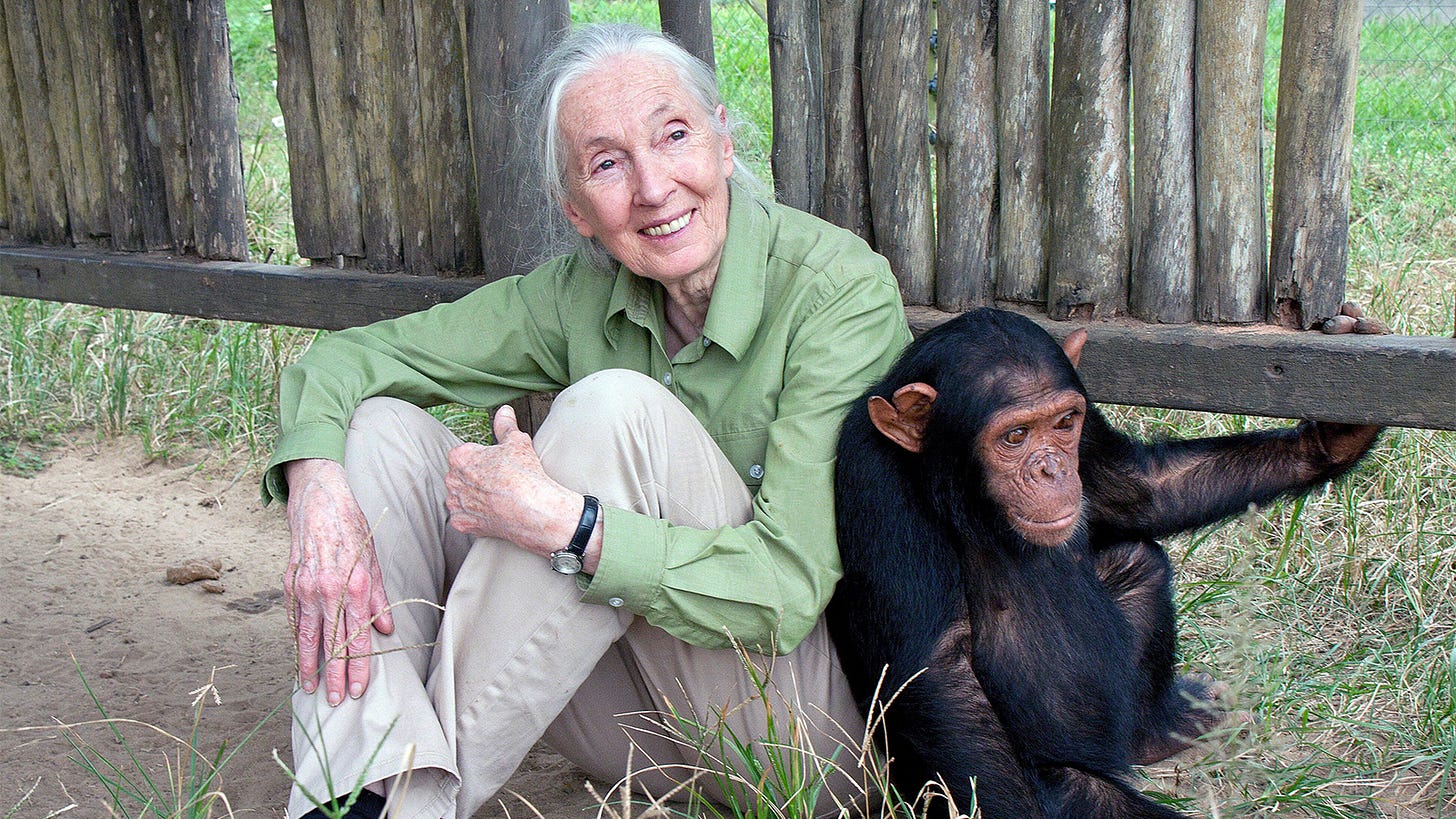Challenging Each Other's Intellect Isn't a Guaranteed Way Through Disagreement
There may be a smarter approach to better connect with people to achieve improved outcomes
The battle of intelligence, arguments and wills is commonplace. That fight though can be problematic to accomplishing planned objectives and the outcomes being pursued.
There is another process, less common, that can increase the probability of success.
Jane Goodall, the internationally—known primatologist and conservationist, died on Oct. 1st at the age of 91 yet once provided her conclusions for greater persuasiveness.
“If one wants to reach people; If one wants to change attitudes, you have to reach the heart,” she said, adding that, “You can reach the heart by telling stories, not by arguing with people’s intellects.”
Stories as a recommendation over facts and a show of intellect seems backwards from what humankind has been taught to believe and do, at least in most circumstances. That doesn’t mean the status quo is sound and an absolute for communication.
“Stories give facts a pulse,” says Smita D. Jain, an executive and life coach, TEDx Speaker and author who coaches senior leaders on communication that moves people when logic isn’t enough.
“In practice, I see that narratives engage attention, reduce defensiveness and create identification: ‘that’s me’ or ‘that could be me,” she says.
Jain elaborates on what is happening in the brain that connects humans to higher-level, richer, mental processing.
“Neurologically, stories are processed not only as information but as experience, pairing meaning with emotion, so they’re remembered and acted upon more than isolated arguments or statistics,” she explains.
Narratives as a Consistent Spark
“Stories are the most reliable catalyst I’ve found for meaningful, sustained change,” says Lindsey Dinneen, who writes and speaks about leadership, communication and culture and whose work centers on storytelling.
“They do what data alone can’t: they let people feel first, then think with more openness. When a story resonates, we experience a form of co-presence: ‘I’m no longer just analyzing your point; I’m imaginatively walking alongside you.’
“That shift matters,” she stresses, because
“It lowers defenses, softens certainty and invites curiosity.”
Science Clearly Shows the Probability of Benefit
“Stories activate multiple brain regions at the same time, creating an immersive emotional experience for the listener,” says Doug Noll, a lawyer, educator, author and professional mediator with decades-long experience managing and resolving conflicts.
“In addition, through the process of neural coupling, the listener’s brain mirrors the story teller, creating alignment in understanding and emotional experience.”
Noll elaborates to explain the benefits that can naturally develop.
“When absorbed in a story, people lower their cognitive defenses,” he says. “They stop counterarguing and instead ‘live inside’ the narrative world. This makes them more open to persuasion and attitude change.”
This isn’t new. It’s how humans instinctually have been for thousands of years.
“Humans evolved to prioritize emotion over logic in decision-making,” Noll says. “Antonio Damasio’s work shows that without emotional input, people cannot make even simple decisions. Stories embed facts inside emotional contexts, which gives them motivational power.”
The Presence of the Feel-Good Hormone
“Paul Zak’s studies show that compelling narratives raise oxytocin levels, the neurochemical associated with empathy and bonding,” Noll says. “When listeners feel empathy for a character, they are more likely to adopt new perspectives and act altruistically.
“In short, there is a lot of science supporting the proposition.”
Humankind has a habit of pushing intellect, real and perceived, on each other to convince them of what is or is believed to be more logical in disagreement, conflict or crisis. That isn’t a reliable strategy.
“Arguments invite winners and losers,” Jain says.
“Stories invite witnesses and participants.”
“In disagreement, a story lowers the shield of counter-argument by shifting the listener from judge to companion: we walk alongside a character, confront stakes and arrive at meaning together.
“That shared journey builds trust and possibility.”
This often isn’t natural. It has to be learned.
“Stories convert judgment into curiosity and curiosity is the gateway to change,” Jain says.
Know and Value the Limbic System: Here’s Why
Logic may not get you all the way to the intended goal.
“Logical argument activates mostly the prefrontal cortex,” Noll says. “Stories, by contrast, activate multiple brain regions simultaneously. The neocortex processes reasoning and language but it is the limbic system that drives motivation, loyalty and behavior.
“Stories activate the limbic system first, creating emotional buy-in before reasoning even begins.”
The Battles that Regularly Happen
“Arguments invite rebuttal; stories invite identification,” Noll says.
“When presented with logic, people instinctively defend their existing beliefs. Stories bypass that reflex by evoking shared human experience. Dr. Goodall had it right.”

Dinneen agrees.
“Arguments tend to ask, ‘Will you yield?’ Stories ask, ‘Will you walk with me?’” she says.
“Ultimately, stories honor what makes us human: our need for meaning, connection and respect. They let us meet in the middle—not to collapse our differences, but to carry them together.”







